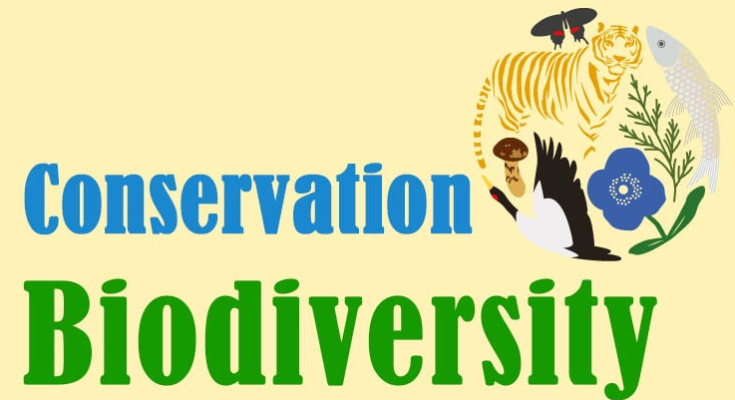Biodiversity Conservation Efforts: Protecting Endangered Species and Habitats
Introduction:
Biodiversity, the variety of life on Earth, is essential for maintaining ecosystem stability, resilience, and functioning. However, human activities such as habitat destruction, climate change, pollution, and overexploitation of natural resources have led to a dramatic decline in biodiversity, threatening the survival of species and ecosystems worldwide. Biodiversity conservation efforts aim to protect and restore ecosystems, species, and genetic diversity to ensure the long-term health and sustainability of our planet. In this article, we will explore the importance of biodiversity conservation, discuss the main threats to biodiversity, and examine strategies and initiatives for protecting endangered species and habitats.
1. Importance of Biodiversity Conservation:
a. Ecosystem Services:
Biodiversity provides a wide range of ecosystem services that are essential for human well-being and survival. These services include air and water purification, climate regulation, soil fertility, pollination, pest control, and nutrient cycling. Healthy ecosystems support agriculture, fisheries, forestry, and tourism industries, providing livelihoods and economic opportunities for millions of people around the world.
b. Genetic Resources:
Biodiversity is a source of genetic resources that have important applications in medicine, agriculture, biotechnology, and industry. Many plant and animal species contain genetic traits that can be used to develop new medicines, crop varieties, and technologies to improve human health, food security, and economic development. Protecting biodiversity ensures the preservation of genetic diversity and the potential for future scientific discoveries and innovations.
c. Cultural and Spiritual Values:
Biodiversity is deeply intertwined with cultural, spiritual, and religious beliefs, traditions, and practices of indigenous peoples and local communities. Many cultures and indigenous societies rely on biodiversity for their cultural identity, traditional knowledge, spiritual connection to nature, and social cohesion. Protecting biodiversity is essential for respecting and preserving the cultural heritage and rights of indigenous peoples and promoting cultural diversity and tolerance.
2. Threats to Biodiversity:
a. Habitat Loss and Degradation:
Habitat loss and degradation are the primary drivers of biodiversity loss worldwide. Deforestation, urbanization, agricultural expansion, mining, and infrastructure development have resulted in the destruction and fragmentation of natural habitats, leading to the loss of species, ecosystems, and biodiversity hotspots. Habitat degradation, including pollution, soil erosion, invasive species, and habitat fragmentation, further exacerbates the decline of biodiversity and threatens the survival of species.
b. Climate Change:
Climate change is a significant threat to biodiversity, altering temperature and precipitation patterns, sea levels, and ecosystem dynamics. Rising temperatures, extreme weather events, melting ice caps, and ocean acidification are causing shifts in species distributions, changes in phenology and behavior, and disruptions to ecosystem functioning. Climate change exacerbates other threats to biodiversity, such as habitat loss, invasive species, and disease outbreaks, increasing the vulnerability of species and ecosystems to extinction.
c. Overexploitation and Illegal Wildlife Trade:
Overexploitation of natural resources, including hunting, poaching, fishing, and logging, poses a significant threat to biodiversity, particularly for endangered species and ecosystems. Illegal wildlife trade, driven by demand for exotic pets, trophies, ivory, and traditional medicine, threatens the survival of many species, including elephants, rhinos, tigers, and pangolins. Unsustainable fishing practices, such as overfishing and bycatch, also contribute to the decline of marine biodiversity and threaten the health of ocean ecosystems.
3. Strategies for Biodiversity Conservation:
a. Protected Areas and Wildlife Reserves:
Protected areas, including national parks, wildlife reserves, marine sanctuaries, and nature reserves, play a crucial role in conserving biodiversity and protecting endangered species and habitats. These areas provide essential habitat for wildlife, preserve critical ecosystems, and safeguard genetic diversity. Establishing and effectively managing protected areas, expanding their coverage, and enhancing connectivity between protected areas are essential strategies for biodiversity conservation.
b. Habitat Restoration and Ecosystem Rehabilitation:
Habitat restoration and ecosystem rehabilitation efforts aim to restore degraded ecosystems, rehabilitate damaged habitats, and enhance biodiversity conservation. These efforts include reforestation, afforestation, wetland restoration, coral reef rehabilitation, and mangrove reforestation projects. Restoring degraded ecosystems improves habitat quality, enhances biodiversity, and increases ecosystem resilience to environmental stressors such as climate change and habitat loss.
c. Sustainable Land Use and Resource Management:
Promoting sustainable land use and resource management practices is essential for conserving biodiversity and reducing habitat destruction and degradation. Sustainable agriculture, agroforestry, sustainable forestry, and sustainable fisheries practices minimize the environmental impacts of land use and resource extraction while promoting conservation and sustainable use of natural resources. Adopting sustainable land use and resource management practices requires collaboration between governments, businesses, communities, and stakeholders to balance conservation objectives with socio-economic development goals.
d. Conservation Education and Awareness:
Conservation education and awareness-raising initiatives play a vital role in promoting public understanding, appreciation, and support for biodiversity conservation. These initiatives include environmental education programs, public outreach campaigns, nature-based tourism, and citizen science projects that engage communities and stakeholders in conservation efforts. Building environmental literacy, fostering a sense of stewardship, and empowering local communities to participate in biodiversity conservation are essential for achieving long-term conservation goals.
Conclusion:
Biodiversity conservation is a global imperative that requires urgent and concerted action to address the root causes of biodiversity loss and protect the rich diversity of life on Earth. By understanding the importance of biodiversity, recognizing the threats facing biodiversity, and implementing strategies for conservation, we can safeguard endangered species and habitats, preserve ecosystem services, and promote sustainable development for current and future generations. Through collaboration, innovation, and collective action, we can create a more resilient, equitable, and biodiverse planet for all species to thrive.
For more information visit: elmzaango.com
For more information visit: newsburing.com
This post will provide you with a detailed overview to aid you comprehend the principles keramin цена of a healthy and balanced diet plan.
